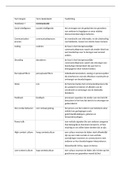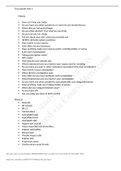Exam (elaborations)
Test Bank for Critical Care Nursing Diagnosis and Management 9th Edition by Linda D. Urden, Kathleen M. Stacy Included All Chapters 1-41
Test Bank for Critical Care Nursing Diagnosis and Management 9th Edition by Linda D. Urden, Kathleen M. Stacy Included All Chapters 1-41
[Show more]







